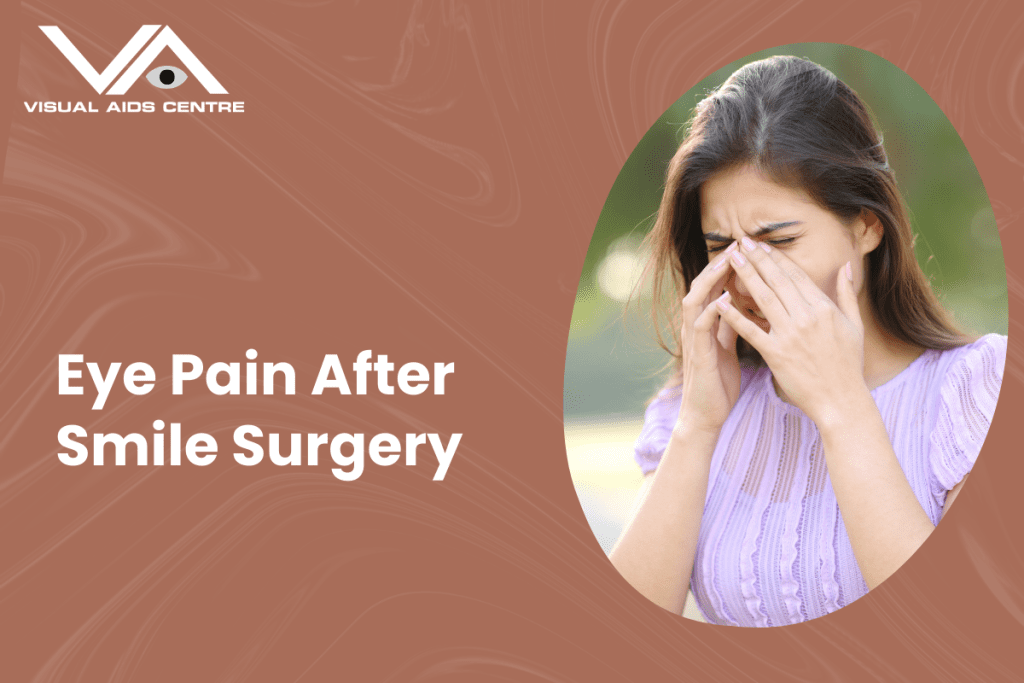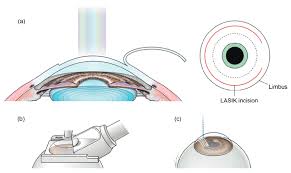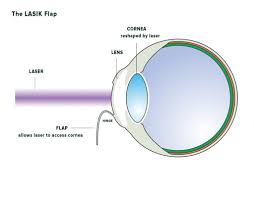Table of Contents
ToggleSmile eye surgery, also known as Small Incision Lenticule Extraction, is a cutting-edge refractive surgery technique that aims to correct common vision problems like nearsightedness and astigmatism. This advanced procedure offers the promise of freedom from glasses and contacts.
With its keyhole approach, Smile eye surgery is generally considered safe and effective, causing minimal discomfort. While many patients describe the procedure as virtually pain-free, it’s important to note that some individuals may experience eye pain after undergoing Smile eye surgery.
In this comprehensive guide, we will explore the potential reasons behind post-operative eye pain and provide practical strategies to manage and alleviate discomfort, ensuring a smooth recovery process for patients.

Understanding Smile Eye Surgery
Before delving into the specifics of eye pain following Smile eye surgery, it is essential to grasp the fundamentals of the procedure.
Smile eye surgery is a minimally invasive technique that involves creating a small incision to extract a lenticule from the cornea, reshaping it, and thereby correcting refractive errors. In comparison to traditional laser eye surgeries, Smile offers advantages such as reduced dry eye symptoms and quicker recovery times.
Understanding the Healing Process
After undergoing SMILE surgery, your cornea undergoes a significant restructuring process.
This natural healing phenomenon can give rise to various sensations, including:
- Grittiness or Dryness:
During surgery, the delicate tear film can be disrupted, causing dryness and a sensation similar to having a foreign body in the eye. - Aching or Stinging:
Temporary aching or stinging sensations may occur as the cornea heals and nerves regenerate. - Blurred Vision:
Fluctuations in vision are expected during the initial days as the cornea heals and adjusts to its new shape. - Light Sensitivity:
Increased sensitivity to light is common as the corneal epithelium heals and inflammation occurs.
Identifying Potential Causes of Pain
Although these sensations typically fall within the realm of normal post-operative discomfort, certain circumstances may result in heightened or prolonged eye pain.
- Dry Eyes:
One common cause of eye pain after smile surgery is dry eyes. The procedure can temporarily affect tear production, resulting in dryness and discomfort. - Inflammation and Swelling:
Excessive inflammation and swelling around the eye, though necessary for healing, can sometimes contribute to increased pain. Your surgeon may prescribe additional medication or adjust your treatment plan to manage this. - Corneal Sensitivity:
Smile eye surgery involves manipulation of the corneal tissue, which can increase sensitivity. This heightened sensitivity can lead to pain, particularly when exposed to light. - Corneal Erosions:
Minor scratches or scrapes on the corneal surface can occur during the procedure or from rubbing your eyes. These scratches typically cause sharp, stabbing pain and require immediate consultation with your surgeon. - Pre-Existing Eye Conditions:
Underlying conditions such as dry eye syndrome can worsen post-operative discomfort. Open communication with your surgeon regarding your complete medical history is vital to managing existing conditions alongside the healing process. - Infection or Complications:
While rare, post-operative infections or complications can present as intense pain accompanied by redness, swelling, and discharge. It is crucial to promptly notify your surgeon of any unusual symptoms for evaluation and immediate medical attention.
Managing and Alleviating Eye Pain
- Pain Medication:
Follow your surgeon’s instructions for using prescribed pain medication to effectively manage discomfort. If you find the medication to be ineffective, don’t hesitate to reach out to your surgeon for guidance. - Artificial Tears or Eye Drops:
Regularly use the prescribed lubricating eye drops to prevent and alleviate dryness, grittiness, and irritation. Follow your surgeon’s recommendations on the type and frequency of eye drops. These drops help maintain proper moisture levels and promote a smoother healing process.
- Apply Cold Compresses:
Cold compresses can effectively reduce inflammation and swelling and provide relief. Place a clean, cold compress over closed eyelids for short periods, as recommended by your surgeon. This can provide relief and contribute to a more comfortable recovery. - Eye Protection:
To prevent accidental injury, avoid rubbing your eyes and wear the recommended protective eyewear as advised. - Light Sensitivity Management:
Use sunglasses with adequate UV protection or light-filtering screens, even indoors, if needed, to decrease discomfort in bright environments. This precaution can significantly reduce eye pain associated with light sensitivity. Also, avoiding bright lights during the initial recovery period can be beneficial. - Rest and Hydration:
Prioritize sleep and maintain adequate fluid intake for overall well-being. This can contribute to better tear production, promote healing, and reduce overall discomfort. Drink plenty of water and limit substances that can cause dehydration, such as excessive caffeine or alcohol. - Comply with Post-Operative Care Instructions:
Your surgeon will provide specific post-operative care instructions tailored to your individual needs. It is crucial to adhere to these guidelines to minimize pain, ensure proper healing, and achieve a successful recovery. If you experience persistent or worsening eye pain, promptly contact your surgeon for guidance.
When to Seek Immediate Medical Attention?
While some discomfort is expected after SMILE, certain symptoms warrant immediate consultation with your surgeon:
- Intense or sudden pain that worsens over time.
- Loss of vision or a significant decline in visual acuity.
- Redness, swelling, or discharge from the eyes.
- Persistent sensitivity to light that hampers daily activities.
- Fever or chills accompanied by eye pain.
Important Reminder: Maintaining open and effective communication with your surgeon is of utmost importance during the healing process. Please don’t hesitate to voice any concerns or discomfort you may encounter. Early intervention can effectively address potential complications and help facilitate a seamless recovery journey.
Embrace a Future of Clarity:
While it is common to experience eye pain after undergoing Smile eye surgery, understanding the underlying causes, implementing effective management strategies, and promptly seeking medical attention if necessary can greatly enhance the overall recovery process.
By following these guidelines, patients can navigate the post-smile surgery period with greater comfort and confidence in the outcome of their vision. As always, maintaining open communication with your surgeon and promptly reporting any unusual symptoms are crucial for a successful and complication-free recovery from Smile eye surgery.













